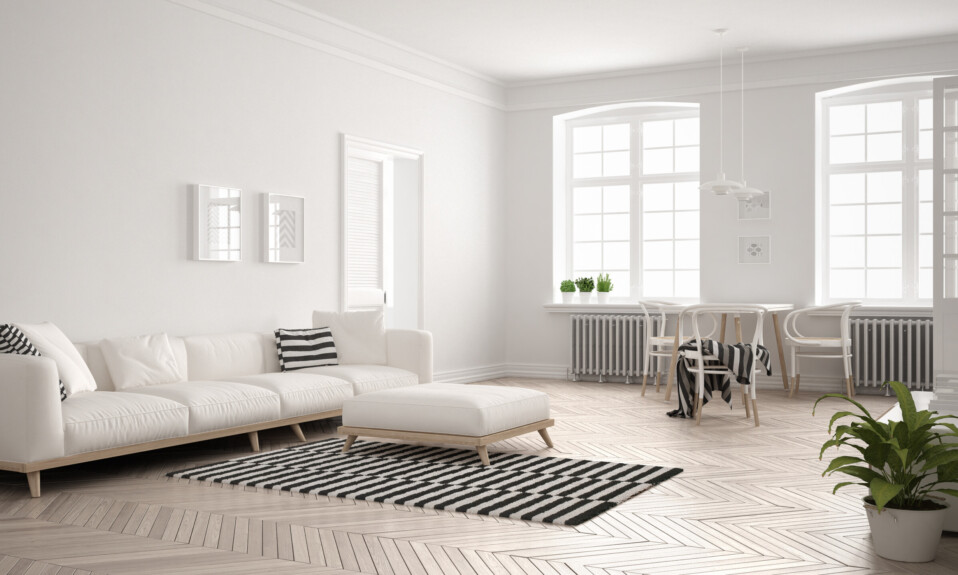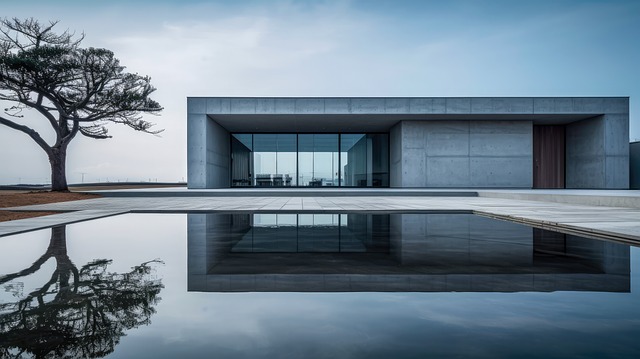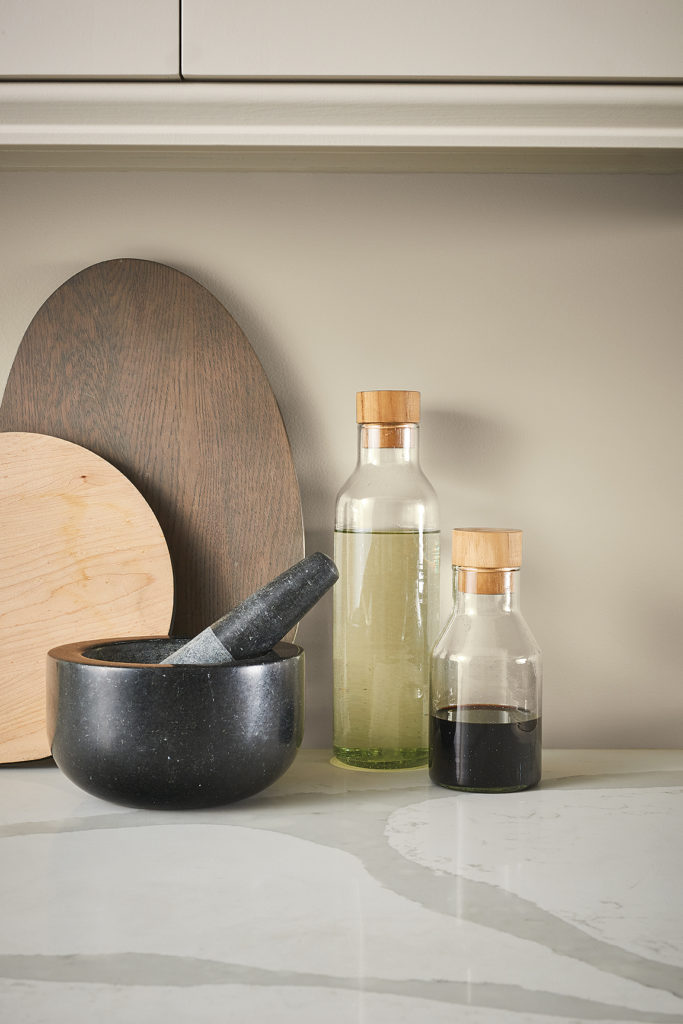
In this article, we will explore ten practical and efficient steps to transform your home into a minimalist space.
By decluttering rooms, incorporating minimalist furniture, and utilizing minimalist color schemes, you can create a serene and organized environment.
We will also discuss minimalist storage solutions, decor ideas, and how to create clutter-free spaces.
Whether you desire freedom from excess belongings or simply wish to embrace a minimalist lifestyle, these steps will guide you towards achieving your goal.
Decluttering Rooms
To begin the process of decluttering your rooms, start by assessing each room's possessions. This step is crucial in creating a minimalist space that promotes freedom and clarity.
Begin by decluttering one room at a time, focusing on one specific area or category of belongings. Sort through each item and ask yourself if it sparks joy or if it serves a practical purpose. If the answer is no, it's time to let go.
Consider donating or selling items that are in good condition but no longer needed. Use organizing techniques such as categorizing items, utilizing storage solutions, and creating designated spaces for each item.

Minimalist Furniture
When it comes to transforming your home into a minimalist space, choosing the right furniture is essential. Space-saving furniture options allow you to maximize the use of your available space, ensuring that every piece serves a purpose.
Look for simplified and functional designs that prioritize clean lines and minimal ornamentation to create a cohesive and clutter-free environment.
Space-Saving Furniture Options
One effective approach for creating a minimalist space is by incorporating space-saving furniture options. By using multi-functional furniture, you can maximize small spaces and create a clutter-free environment.
Here are four space-saving furniture options that can help you achieve a minimalist and functional home:
- Convertible sofa beds: These versatile pieces of furniture can serve as a comfortable seating area during the day and transform into a bed at night, saving both space and money.
- Wall-mounted desks: Ideal for small home offices or study areas, these desks can be folded up and stored against the wall when not in use, providing more floor space.
- Storage ottomans: These dual-purpose furniture pieces not only provide a place to rest your feet but also offer hidden storage compartments, perfect for keeping your belongings organized and out of sight.
- Nesting tables: These tables come in a set of two or more, with each table fitting neatly under the larger one. They can be used individually or grouped together to create more surface area when needed.
Incorporating these space-saving furniture options into your home can help you create a minimalist space that is both stylish and functional, allowing you to make the most of your small living area.
Simplified and Functional Designs
By incorporating simplified and functional designs, minimalist furniture brings a sense of elegance and efficiency to your home.
One key aspect of minimalist furniture is functional lighting. Opt for sleek and simple lighting fixtures that provide ample illumination without overpowering the space. Consider ceiling-mounted or wall-mounted lights to free up floor space and create a clean, clutter-free look.

Another area where simplified and functional designs can be applied is in the creation of a minimalist home office. Choose a desk with clean lines and minimal storage to keep the space uncluttered. Use a comfortable chair that also adds a touch of style to the room. Incorporate storage solutions such as floating shelves or wall-mounted organizers to keep your workspace organized and free from distractions.
With minimalist furniture, you can create a functional and serene home environment that promotes productivity and relaxation.
Minimalist Color Schemes
The minimalist home's color schemes should consist of neutral tones and muted hues to achieve a clean and uncluttered aesthetic.
Here are four essential elements to consider when creating a minimalist color scheme:
- Neutrals: Stick to a palette of whites, grays, and beiges for the base colors in your home. These neutral tones provide a calming and timeless backdrop for your minimalist space.
- Muted Hues: Incorporate soft pastel shades such as light blues, blush pinks, or pale greens to add subtle pops of color without overpowering the overall simplicity of the design.
- Monochromatic Accents: Use shades from the same color family to create depth and interest. For example, pair different shades of gray or beige together to add visual texture and dimension.
- Minimalist Artwork: Choose artwork that aligns with the minimalist aesthetic. Opt for simple, abstract pieces or black and white photography to complement the clean lines and simplicity of your space.
Minimalist Storage Solutions
When it comes to creating a minimalist storage solution in your home, there are a few key points to consider.
First, hidden storage options can help maximize space and minimize visual clutter.
Second, decluttering is essential for achieving a minimalist aesthetic, so be sure to purge unnecessary items regularly.

Lastly, investing in space-saving furniture ideas, such as multi-functional pieces or built-in shelving, can help optimize storage without sacrificing style.
Hidden Storage Options
One effective way to incorporate minimalist storage solutions in your home is by utilizing hidden storage options. These hidden storage hacks are perfect for maximizing small spaces while maintaining a clutter-free environment.
Here are four items that can help you achieve this:
- Wall-mounted shelves: Install shelves on your walls to free up floor space and display your belongings in a stylish and organized manner.
- Under-bed storage: Invest in storage containers or drawers that can fit under your bed. This is a great way to utilize the often wasted space under your sleeping area.
- Hidden cabinets: Install cabinets with hidden handles or push-to-open mechanisms to maintain a sleek and minimalist look while providing ample storage space.
- Foldable furniture: Opt for furniture pieces that can be folded and tucked away when not in use. This allows you to maximize space and keep your living areas clutter-free.
Decluttering for Minimalism
To achieve minimalist storage solutions, start by decluttering your home.
Decluttering is a crucial step in embracing a minimalist lifestyle, as it helps you eliminate unnecessary items and create a sense of freedom and space in your living environment.
There are various decluttering techniques you can employ to simplify your possessions. One effective approach is the KonMari method, where you sort through your belongings by category and keep only those items that spark joy.
Another technique is the 30-day minimalism challenge, where you remove one item from your home each day for 30 days.

Additionally, consider adopting a 'one in, one out' rule, where you only bring new items into your home once you have gotten rid of something old.
Space-Saving Furniture Ideas
To maximize your minimalist storage solutions, consider incorporating space-saving furniture ideas into your home. These innovative furniture pieces not only save space but also add functionality and style to your living space.
Here are four space-saving furniture ideas that can transform your home into a minimalist haven:
- Space-saving bed options: Opt for a loft bed or a bed with built-in storage compartments underneath. These beds not only provide a comfortable sleeping space but also offer ample storage for linens, clothing, and other essentials.
- Multifunctional furniture ideas: Invest in furniture pieces that serve multiple purposes, such as a coffee table with hidden storage or a sofa that can be transformed into a bed. These versatile pieces help maximize space without compromising on functionality.
- Wall-mounted shelves and cabinets: Utilize vertical space by installing wall-mounted shelves and cabinets. These storage solutions not only free up floor space but also add a minimalist aesthetic to your home.
- Foldable and collapsible furniture: Consider using foldable tables, chairs, and shelves that can be easily tucked away when not in use. These collapsible furniture pieces are perfect for small spaces and can be effortlessly stored to create an open and clutter-free environment.
Minimalist Decor
When aiming to achieve a minimalist aesthetic in your home, incorporating minimalistic decor is essential. Minimalist artwork and lighting are two key elements that can help you create a serene and clutter-free space.
When choosing minimalist artwork, opt for simple and abstract pieces that evoke a sense of calm and simplicity. Avoid busy patterns or excessive colors that can disrupt the overall minimalist feel.
Incorporate minimalist lighting fixtures that are sleek and functional, such as recessed lights or pendant lamps with clean lines. Avoid ornate chandeliers or bulky lamps that can overpower the space.
Open Spaces
Incorporating open spaces is crucial when striving to achieve a minimalist aesthetic in your home. An open concept design creates a sense of freedom, simplicity, and spaciousness, allowing you to fully embrace minimalist living.

Here are four ways to incorporate open spaces into your home:
- Remove unnecessary walls: Break down barriers by removing non-load-bearing walls. This will create a seamless flow between rooms and promote a feeling of openness.
- Opt for minimal furniture: Choose furniture pieces that are sleek, simple, and functional. Avoid cluttering your space with excessive furniture, as it can make a room feel cramped and suffocating.
- Maximize natural light: Open up your curtains and let the natural light flood in. This not only creates a bright and airy atmosphere but also enhances the perception of space.
- Embrace simplicity in decor: Keep your decor minimal and decluttered. Choose a few statement pieces that align with your minimalist style, rather than filling your space with unnecessary decorations.
Minimalist Kitchen
When transforming your home into a minimalist space, it is essential to focus on creating a minimalist kitchen.
Start by decluttering your kitchen utensils and keeping only the essentials.
Simplify your kitchen decor by opting for clean lines and minimal accessories.
Lastly, ensure efficient organization in your kitchen by utilizing storage solutions that maximize space and minimize clutter.
Decluttering Kitchen Utensils
To create a minimalist kitchen, begin by decluttering your kitchen utensils. This will not only create a more organized and functional space but also promote a sense of freedom and simplicity. Here are four organizing techniques for decluttering your kitchen utensils:
- Assess and categorize: Start by emptying all your utensil drawers and cabinets. Sort through each item and categorize them into essential and non-essential utensils. Keep only the items you use regularly and donate or discard the rest.
- Invest in multipurpose tools: Instead of having multiple utensils that serve the same purpose, opt for multipurpose tools that can perform various tasks. This will help reduce clutter and save storage space.
- Utilize drawer dividers: Use drawer dividers to separate and organize your utensils. This will prevent them from becoming jumbled and make it easier to find what you need.
- Hang utensils on a wall rack: Consider installing a wall rack to hang your frequently used utensils. This not only saves drawer space but also adds a decorative touch to your minimalist kitchen.
Simplifying Kitchen Decor
Simplification is key when it comes to achieving a minimalist kitchen decor. To create a clutter-free and organized space, focus on kitchen organization and minimalist kitchen appliances.

Start by decluttering your countertops and cabinets, keeping only the essentials within reach. Store items efficiently, using drawer dividers and vertical storage solutions.
Opt for sleek and simple designs when choosing kitchen appliances, such as a minimalist toaster or a compact coffee maker. Keep surfaces clean and free of unnecessary decorations, allowing for a sense of openness and tranquility.
Embrace neutral colors and natural materials, such as wood or stainless steel, to enhance the minimalist aesthetic. By simplifying your kitchen decor, you can create a space that promotes freedom and harmony in your daily routines.
Efficient Kitchen Organization
Achieve efficient kitchen organization in your minimalist kitchen by implementing smart storage solutions. By optimizing your kitchen storage, you can create a clutter-free space that promotes ease and functionality.
Here are four essential tips to help you achieve efficient kitchen storage:
- Maximize Cabinet Space: Use adjustable shelves and drawer dividers to customize your storage and make the most of every inch. Consider installing sliding shelves or pull-out baskets for easy access to items at the back.
- Utilize Vertical Space: Install wall-mounted racks or hooks to hang pots, pans, and utensils. This not only saves space but also adds a touch of aesthetic appeal to your kitchen.
- Streamline Your Pantry: Create a minimalist pantry by decluttering and organizing your food items. Use clear containers and labels to easily identify items and minimize waste.
- Invest in Multi-Functional Storage: Look for furniture and appliances that serve multiple purposes, such as a kitchen island with built-in storage or a magnetic knife strip that doubles as wall decor.
Clutter-Free Spaces
Creating clutter-free spaces is a crucial step in achieving a minimalist aesthetic for your home. Embracing a clutter-free lifestyle not only brings a sense of calm and serenity but also allows for more freedom and space to truly enjoy your living environment.
One way to start decluttering is by focusing on your wardrobe. Adopting a minimalist wardrobe means having fewer, high-quality clothing items that you truly love and wear regularly. Sort through your clothes and donate or sell items that no longer serve you. Keep only the essentials and pieces that bring you joy.

Another effective way to create clutter-free spaces is by implementing proper storage solutions. Utilize shelves, bins, and organizers to keep your belongings neat and easily accessible. Regularly declutter and organize your space to maintain a minimalist home that promotes a sense of freedom and tranquility.
Creating a Minimalist Bathroom
The minimalist bathroom can be achieved by implementing a clean and organized design. To create a minimalist bathroom that exudes simplicity and freedom, consider the following tips:
- Minimalist Shower Design: Opt for a sleek and streamlined shower design with clean lines and minimal embellishments. Choose a frameless glass shower enclosure to create an open and airy feel. Keep the shower area free from unnecessary clutter and use simple, neutral-colored tiles for a minimalist aesthetic.
- Declutter and Simplify: Get rid of unnecessary items and keep only the essentials in your bathroom. Clear countertops and storage spaces from unnecessary clutter to create a sense of openness and calm. Use storage solutions like floating shelves or wall-mounted cabinets to keep things organized and out of sight.
- Minimalist Bathroom Accessories: Choose minimalistic bathroom accessories that blend seamlessly with the overall design. Opt for simple, high-quality fixtures in neutral tones. Keep the color palette simple and cohesive, using just a few key colors for a cohesive and harmonious look.
- Focus on Functionality: Prioritize functionality in your minimalist bathroom design. Choose fixtures and accessories that serve their purpose efficiently and effectively. Ensure that everything has its designated place and is easily accessible for a clutter-free and functional space.
Minimalist Bedroom Design
To create a minimalist bedroom design that complements the clean and organized aesthetic of the bathroom, focus on simplicity and functionality.
Start by decluttering the space and removing any unnecessary items.
Choose a neutral color palette for the walls and furniture to create a calming atmosphere.
Opt for minimalist lighting fixtures that provide ample light without being overly ornate. Consider installing wall-mounted sconces or pendant lights to save space and create a streamlined look.
When it comes to bedding, select simple and understated designs. Stick to high-quality materials and opt for a neutral color scheme to maintain a minimalist feel.

Avoid excessive patterns and decorations, and instead, focus on clean lines and a clutter-free environment.
Frequently Asked Questions
How Can I Make a Small Room Feel More Minimalist and Spacious?
To make a small room feel more minimalist and spacious, focus on maximizing storage and utilizing neutral colors. By decluttering and organizing items, using multi-functional furniture, and keeping the color palette simple, you can create a serene and open atmosphere.
What Are Some Tips for Incorporating Minimalist Design Into a Home With Young Children?
When incorporating minimalist design into a home with young children, it is important to find practical solutions for organizing toys and creating kid-friendly spaces. Here are some tips to help achieve this balance.
Can I Still Have a Cozy and Inviting Home While Following a Minimalist Aesthetic?
Creating a warm and inviting minimalist space requires balancing coziness with minimalism. By carefully selecting furniture and decor that prioritize comfort, incorporating soft textures and warm lighting, a cozy and inviting home can still be achieved while following a minimalist aesthetic.
How Do I Decide Which Items to Keep and Which to Get Rid of During the Decluttering Process?
When deciding which items to keep and which to get rid of during the decluttering process, it is important to consider your personal style and how each item aligns with it. Organizing sentimental items can be done by creating designated spaces or incorporating them into your minimalist decor.
Are There Any Recommended Resources or Books for Further Inspiration and Guidance on Minimalist Home Design?
There are several recommended resources and books available for further inspiration and guidance on minimalist home design. These resources provide practical tips and ideas for creating a minimalist space that promotes freedom and simplicity.
 Business & FinanceHealth & MedicineTechnologyLifestyle & CultureScience & EnvironmentWorld NewsPrivacy PolicyTerms And Conditions
Business & FinanceHealth & MedicineTechnologyLifestyle & CultureScience & EnvironmentWorld NewsPrivacy PolicyTerms And Conditions
